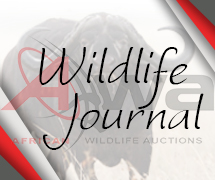Brahman Cattle Breeders Society of South Africa
The Brahman Cattle Breeders’ Society of South Africa, SA Brahman, was founded on 6 November 1957 in Kroonstad, in response to growing recognition of the value of this breed in South Africa.
The Department of Agriculture officially accepted the Brahman cattle breed on 3 December 1959. The breed has helped to significantly improve South Africa’s beef cattle industry, especially during its first three decades in the country, when there was a shortage of good quality genetic material.
The Brahman cattle breed soon became labelled a “chameleon” because of its unique ability to adapt and thrive wherever it was produced, and the society named it the “King of Crossbreeding” because of the remarkable impact it had when used on other breeds. The Simbra is one great example of a breed that developed thanks to the strategic cross of Simmentalers with Brahmans.
In response to the Brahman’s magnificent attributes, Brahman Cattle Breeders' Society of South Africa membership to the society increased by 466% from its 41 original members, within the first decade after the society was launched. Recorded Brahman births over this time, increased by 1297%, registrations by 582% and transfers by 1 542 percent.
By the mid-1980s the Brahman surpassed the Afrikaner cattle breed in becoming the most dominant breed, with registrations increasing from 4,4% in 1965 to almost 57% over this time. The society in 2020, boasted close to 600 members with more than 60 000 registered animals.
History of SA Brahman
The Brahman is a medium-sized, humped, short-haired cattle breed, varying from light grey and red to almost black in colour.
Brahman was the first cattle breed to develop in the United States, out of crossbreeding between local European breeds and Bos indicus breeds, such as the Guzerat, the Nelore and Gyr, which were imported from India, Mexico and Brazil between 1854 and 1926 to introduce hardier cattle for states such as Louisiana, Texas and California.
Offspring crossed with the Bos Indicus bulls were far superior than the original breeds by the fifth generation, resulting in the formation of the American Brahman Breeders Society by 1924. The breed’s name was suggested by the society’s first chairman, JW Startwelle, in reference to its Indian heritage and the fact that the word Brahmin refers to a spiritual or holy person.
Jürgen Crantz of Namibia is considered the “father of the breed” in South Africa. While on their honeymoon, he and his wife, Vera, bought the first Brahman cattle from the United States to Southern Africa in 1954. The newlyweds travelled with the cattle on the ship, all the way from New Orleans to Cape Town, where after the cattle were transported per truck to Namibia.
These imports were followed by those of W Woker of Windhoek in Namibia, AI Marais of Naunetzi Ranch in South Africa and C Scheepers Normar stud in the same year.
Services of Brahman Cattle Breeders
The mission of the Brahman Cattle Breeders' Society of South Africa is to protect, guide and promote the breeding and genetic improvement of the Brahman breed, with the aim of producing animals that yield high returns under extensive veld conditions.
Brahman Cattle Breeders' Society of South Africa aims to protect the integrity and purity of the Brahman breed, by keeping and maintaining proper records of registered animals and their progeny, and collecting and processing performance data of the breed. Information gathered this way, helps to identify and eliminate breeding problems, and are used to set standards, which can be used as a basis for ion and minimum criteria for registration purposes.
The Brahman Cattle Breeders' Society of South Africa sets standards of approval, which imported animals, ova and semen have to meet before they or their progeny are approved for registration. Imported cattle are inspected within six months after their arrival in South Africa.
SA Brahman actively promotes the breed through various channels, including shows, print and social media. Breeders are also able to use the SA Brahman platform to showcase their animals and inform the farming community of private and public auctions and other sales. Sales and show results are also shared across various platforms to keep members and buyers informed of market trends.
Brahman Cattle Breeders' Society of South Africa members are kept up to date of the latest news and trends via the SA Brahman website, newsletters, the Brahman Journal and farmer clubs, workshops and the annual general meeting.
Members of Brahman Cattle
Applicants need to apply on a prescribed form to become members of the South African Brahman Breeders’ Society, with the application being accompanied by the relevant entrance fee. There are three classes of members: Ordinary membership, sub-membership and associated membership.
Ordinary Brahman Cattle Breeders' Society of South Africa membership is aimed at people who are directly or indirectly involved in the breeding of Brahman cattle, or who are interested in the breeding of Brahman cattle.
Sub-membership is aimed at people, who are directly associated with an ordinary member in the breeding of Brahman cattle, such as a child, grandchild, parent, grand-parent or trustee. Such a member will enjoy the same rights as an ordinary member, so may attend the annual general meeting, participate in discussions and have a right to vote.
Associated Brahman Cattle Breeders' Society of South Africa members are anyone who applies indirectly for membership, or merely for the sake of interest. They share the same rights as the other members, but are not allowed to vote.
Only animals that comply with the minimum breed standards and have no physical defects, abnormalities or diseases are eligible to be recorded in the herd book. The animals should also be approved during a breed inspection.
Farmers have to keep stringent production records of all the registered animals and their offspring, and animals have to be properly branded, according to the breed standards, to ease identification and prevent fraud.
All bulls used for breeding need to be DNA typed. The Society annually nominates herds to DNA parentage determination to test the correctness of parentage and record-keeping. Participation in performance testing is optional, although highly recommended.
Brahman Cattle
The Brahman is a humped breed that developed in the United States.
The Brahman is the first cattle breed to have been developed in the United States, and is now part of beef production of South Africa. European breeds struggled to reach their full genetic potential under the harsh climatic and veld conditions of states, such as California, Louisiana and Texas. To overcome this, hardier humped cattle (Bos indicus), which are breeds that trace their ancestry back to India and Pakistan, were imported into the States from India, Mexico and Brazil between 1854 and 1926.
Fewer than three hundred cattle were imported over this time, with most of these animals being either from the Guzerat, the Nelore and Gyr and to a lesser extent the Krishna Valley breeds, which are all purebred Zebu types in their country of origin. These animals were crossed with the local European breeds and by the fifth generation produced cattle that were generally superior to the original imported animals; both Bos indicus and Bos taurus types.
The American Brahman Breeders Society was formed in 1924, after farmers started to realise the value of the breed, and since then the breed has been exported to almost everywhere across the world. The breed’s name refers to the Eastern heritage of the breed, suggested by the Society’s first chairman, JW Sartwell from Houston. The word Brahmin is used in India for a spiritual or holy person and cattle are seen as being holy in this country.
Production in South Africa
Namibian farmer, Jürgen Cranz is seen as the “father” of the Southern African Brahman, as he was the first to import the cattle in 1954. According to the Brahman Breeders Society of South Africa, Jürgen went to the United States on his honeymoon with his wife Vera. While there, they bought seven Brahman bulls and ten calves from JD Hudgins and three bulls from Vernon Frost.
The couple travelled with the cattle on a ship from New Orleans to Cape Town, where the animals d havoc after breaking loose in Cape Town harbour. Everybody tried desperately to recapture the bewildered animals, until a policeman, who grew up on a farm, came to their aid. After quarantine, the cattle were transported by truck to Namibia, with Jürgen on lucerne bales between the animals.
James Gregory was the first to bring the Brahman to South Africa, buying his first bull from Jürgen. The Brahman Cattle Breeders Society was established in 1957 in Kroonstad, by which time 260 Brahmans had already been imported to South Africa, Namibia and Zimbabwe.
Attributes
The Brahman is produced all over South Africa.
The Brahman is a medium sized beef breed, with bulls weighing between 700 to 1000 kg and cows weighing between 450 kg to 650 kg. Calves are generally small, with a birth weight averaging between 25 to 35 kg, but grow rapidly and wean at weights comparable to other breeds.
Brahman cattle vary in colour from very light grey or red to almost black. Their short glossy hair and pigmented skin help to reflect sunlight, which allows the animals to adapt in very hot and humid conditions. They also have more sweat glands than most of the European breeds, and lots of loose skin, which increases their body surface area and helps with temperature regulation.
They are also extremely hardy, with their short hair making it difficult for parasites to attach to it and the cattle secreting an oily substance that repels insects.
The cows can have long productive lives, lasting up to twenty years, and have excellent maternal traits, making them sought after in crossbreeding programmes. The South African Brahman Breeders Society describes the Brahman as “an intelligent animal that adapts well to routine and develops a mild temperament when treated gently.”
Production Regions
The Brahman has been dubbed the "king of crossbreeding".
Brahman is one of the most popular breeds in South Africa, Namibia and, Zimbabwe. Brahman cattle thrive under extensive production conditions, so is produced all over South Africa. Live animals, embryos and semen are exported from South Africa to other African countries, such as Botswana, Zambia, Zimbabwe and Swaziland.
Use
While the Brahman can be used as a pure breed, it has been hailed by the Breeders’ Society as the “king of crossbreeding”, because of the excellent hybrid vigour it brings, along with hardiness, good maternal traits and low birth weight. This is reflected in the fact that almost half the commercial breeders in South Africa use their purebred Brahman animals on other breeds. The Simbra is one great example of a breed that developed thanks to the strategic cross of Simmentalers with Brahmans.
Meat Quality
Although unfairly labelled as producing tough meat, breed evaluations over the past few years have found that the Brahman has the genetic potential to produce good quality, tender meat.
By Glenneis Kriel








